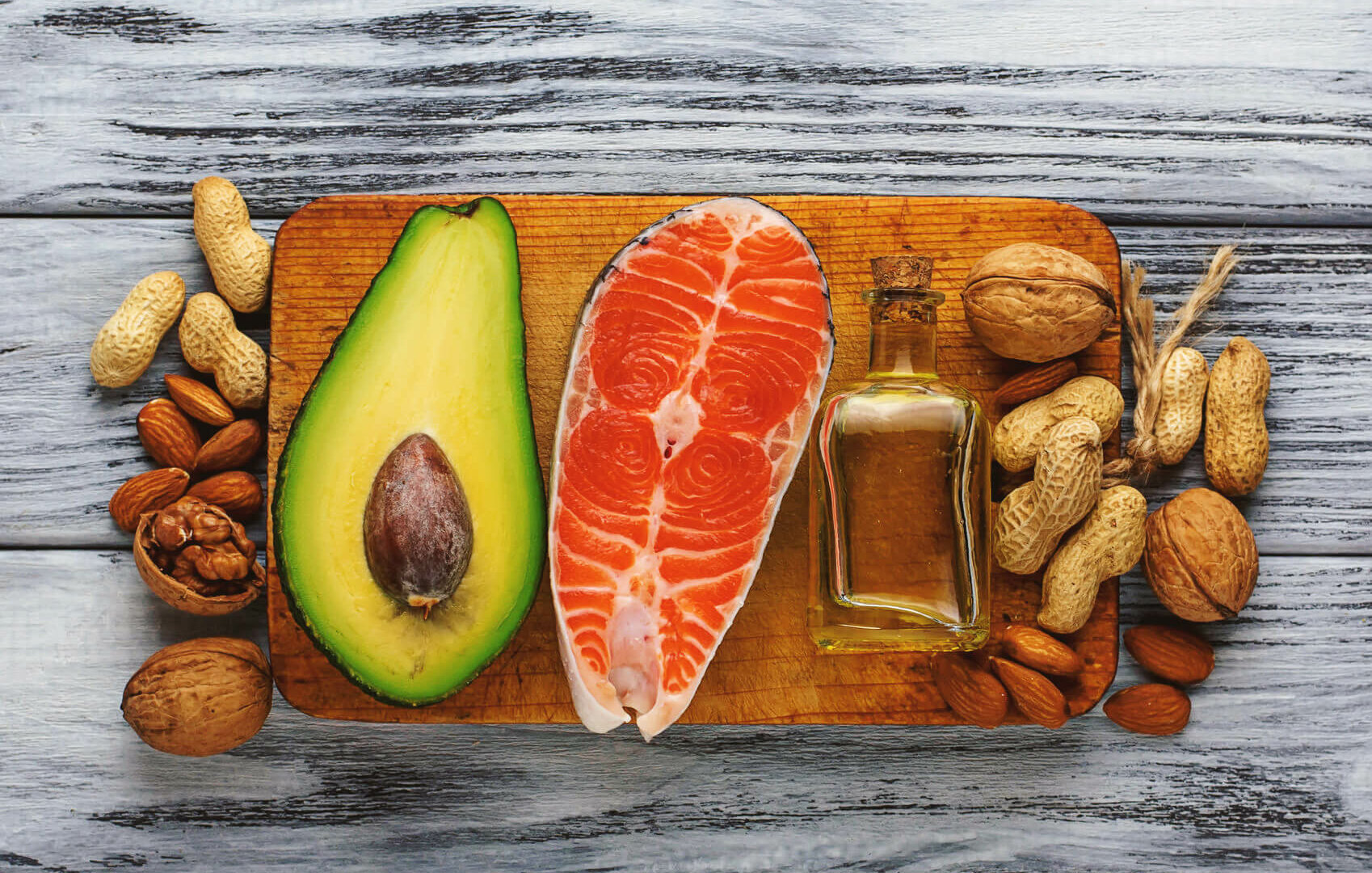30 years ago, it didn’t matter if you were in the fitness world or not – you knew fat was bad news.
Long before the medical mainstream started pushing the (false) idea that eating dietary fat was terrible for your cholesterol levels and heart health, people had been eating low-calorie, low-fat diets in an attempt to slim down. As far back as the 1920s, folks were aware that fat was the most calorie-dense macronutrient, and so had been eradicating (or at least eliminating) it from their weight loss diets.
In the 1940s, physicians started to link a higher fat intake to heart disease. Notable studies included the Framingham Heart Study and the Seven Countries Study of Ancel Keyes. The results became known as the diet-heart hypothesis, and by the late 1950s, the American Heart Association jumped on board with the low-fat ethos.
Things stayed this way for the best part of 40 years, before people started to catch on to the fact that dietary fat wasn’t necessarily the big bad bearer of heart disease and ill health it had been made out to be. [1]
Low-carb, higher-fat diets such as South Beach and Atkins gained popularity, and rather than loading up on bread and bananas, people began gorging on butter and Brazil nuts in an attempt to make fat a more prominent part of their plan while cutting carbs.
To add weight to the good fat gravy train, we hear plenty of dieticians, nutritionists and personal trainers give their patients and clients the blanket advice of – “Eat more good fat.”
But is there really such a thing as “good” fat? And if so, how can it help our weight loss efforts? If it is beneficial, can we have too much of a good thing? And is it about time we all started putting butter in our morning cup of Joe?
What is Good Fat?
Here’s how the American Heart Association breaks down fats –
Love It: Unsaturated (Poly & Mono)
Limit It: Saturated
Lose It: Artificial Trans Fat, Hydrogenated Oils & Tropical Oils [2]
Basically, they’re saying we can eat any kind of unsaturated fats to our heart’s content. We’re talking nuts and seeds, oily fish, oils such as olive or almond, and avocados.
We should limit our saturates, which means butter, red meat, and dairy.
And processed foods high in trans fats should be avoided, along with coconut oil or palm oil.
Pretty straightforward guidelines, no?
No one can argue that this is easy advice to follow, and that we wouldn’t all be slightly healthier by switching out trans and hydrogenated fats in favor of unsaturated ones. But as with so much in nutrition, things aren’t quite so simple.
Why is it Good?
Fats have several benefits. Apart from making food taste better, good fats are often associated with increased heart health, helping to protect bones and joints, and preventing certain diseases.
Including fat with a protein and carb-based meal may also help to slow the digestion, meaning you stay fuller for longer, which aids with satiety when dieting.
Even in the low-fat bodybuilding crazes of the 1980s and 1990s, the most hardcore of low-fat advocates would still consume fish oils or flax oils to help them stay healthy.
You’d have thought it would be an open and shut case here –
Good fats have some benefits. We know more or less what defines a ‘good’ fat and a ‘bad’ one, and we should recognize the need to include them in our diets. But as always, people take this to the extreme, and we have ‘experts’ suggesting that everyday guys and girls start replacing most (or even all) their starchy carbs with these good fats as a way of getting healthier and leaner.
The Fallacy of Good Fat
The definition of so-called good fat and bad fat is blurry.
As we know from the AHA guidelines, most mainstream health organizations class unsaturated fats as good, saturates as less than optimal (but can be eaten in moderation), and trans fats and hydrogenated fats (along with tropical fats) as something to avoid.
Again, this kind of makes sense on paper, but there are some issues.
Omega-6 fats, for instance, are an unsaturated fat and therefore considered ‘good.’ You get omega-6 in hemp seed oil, flaxseed oil, and some nuts. Trouble is, our diets are generally too high in omega-6.
It’s thought that humans evolved on a diet that contained a ratio of roughly 1:1 omega-3: omega-6, whereas our modern diets contain around 1:16. [3] The argument of ‘we evolved like this, so therefore we should eat this way,’ isn’t watertight, but research does seem to show that a ratio less in favor of omega-6 could offer benefits in preventing cancer. [4][5]
Likewise, we’re told to be cautious of saturated fats – butter, cheese, red meat, and so on – to protect our heart health, yet meta analysis data suggests at worst, a weak link between saturated fat and heart disease. [6]
Finally, there’s the fat that people seem truly on the fence about – tropical fats. What with the latest trend of slathering every vegetable in sight with coconut oil, whacking it in your coffee, or eating it straight out of the jar, you’d have thought this was some breakthrough miracle wonder-food. Alas, no.
The claims that coconut oil is virtually medicinal are plentiful, but the strong science to back this up is minimal. Some research has shown that using MCT oil (Medium Chain Triglycerides – the type of fat found in coconut oil) in place of olive oil results in greater weight loss. [7] This, however, is very likely to be mere coincidence. While your body may preferentially burn MCT oil off before other substrates, this simply means even if the MCTs are being used up first, it’s nothing more than a shift in the order of what’s burned, so your body will store other fats or carbohydrates instead of the MCTs.
It’s All About Calories
Regardless of supposed health benefits, it still all comes down to calories.
To lose body fat, you must consume fewer calories than you burn. As fat is the most calorie-dense macronutrient, containing 9 calories per gram in relation to protein and carbohydrates’ 4 calories per gram, it’s the one that can make the biggest difference to our calorie balance when reduced.
If you’re cooking a couple of meals every day in a tablespoon of olive oil to get your good fats, that’s an extra 238 calories. Half a dozen fish oil capsules? That’s another 54. Whack a tablespoon of coconut oil into a protein shake, a handful of flaked almonds onto your salads, and swap a 6-oz serving of chicken for the same amount of salmon, and you can add in 253 more calories.
A few seemingly small changes or additions, and suddenly you’re consuming an extra 545 calories per day. That’s enough to take you from maintenance to gaining 1 pound per week, or to take you from consistently losing a pound per week to staying right where you are.
There may be more to weight loss than just calories, but they’re the bedrock of your success. If you’re not in a deficit, you won’t be losing fat, no matter how ‘good’ the fats are that you’re eating.
Fat is extremely easy to over-consume and doesn’t really do a whole lot to fill you up. You could have a large apple for the same calories as a tablespoon of olive oil. Or you could choose between 3 oz popcorn (enough to fill a fairly large bowl) or 2 oz of pistachios ( a couple of handfuls), both for 318 calories.
Which do you think would fill you up more?
Replace … Don’t Add
There may well be merit in replacing some carbs with healthy fats.
Trouble is, most people simply add. They don’t replace. We see a lot of YouTube videos or recipes on Instagram that emphasize the addition of healthy fats to a meal. This is all well and good, but doing this can easily take a calorie-controlled protein and carb-based meal, to a high-calorie protein, carb and fat one.
While the idea of only eating protein and carb or protein and fat meals is somewhat outdated and defunct, just be aware that when you eat a mixed meal containing all three macronutrients, you’re going to need to keep a closer eye on the total calorie content.
Eat Fat to Burn Fat?
It is 100% true that when you eat more fat, you burn more fat. But this doesn’t mean that when you eat more dietary fat, it results in more body fat being burned. It is simply a shifting of substrate use.
Your body will burn whatever is most plentiful. Therefore, if you eat a meal high in ‘good fats’ and work out shortly after, there’s no doubt you’ll burn a higher percentage of calories from fat, but it won’t necessarily be fat from your midsection, thighs, or wherever else. It’s just your body using what you’re feeding it.
Back to Low-Fat?
There’s no need to go back to a low-fat, high-carb diet, but there is a need to base your diet around your own preferences.
Some people love a lower-carb, higher-fat diet. They enjoy things like cheese, nuts and olives far more than they do bread, pasta, or sugary snacks. And that’s fine. If this is you, your diet can absolutely be a little lower in carbs and higher in fats.
For most people though, too high a fat intake means that in order to keep a suitable calorie intake, they’ll have to drop carbs so far that cravings begin to ramp up. If you’re training hard as well, then a higher carb intake relative to fat is going to aid with recovery and energy for training.
We know that good fats are beneficial for health.
But they’re not a cure-all or a miracle macronutrient. Most of us probably eat enough of them already if we’re regularly consuming oily fish, nuts and seeds, and different types of oils.
Sure, if all your fat intake is coming from hydrogenated oils, really cheap peanut butter, and meat that’s been intensively farmed, then swapping these for good fats is going to help you. Likewise, if you need to get your calorie intake up and are struggling to eat enough, then it’s probably a smart move to add fat-based foods into your diet.
But dousing everything in olive oil, megadosing fish oils, or putting butter in your coffee?
None of these are going to help you lose fat, and they’re probably not going to make you any healthier either.
References
- La Berge A. How the Ideology of Low Fat Conquered America. Journal of the History of Medicine and Allied Sciences. 2007;63(2):139-177. doi:10.1093/jhmas/jrn001.
- Good Fats and Bad Fats: The Facts on Healthy Fats. American Heart Association. 2017. Available at: https://healthyforgood.heart.org/eat-smart/infographics/the-facts-on-fats. Accessed December 6, 2017.
- Simopoulos A. The importance of the ratio of omega-6/omega-3 essential fatty acids. Biomedicine & Pharmacotherapy. 2002;56(8):365-379. doi:10.1016/s0753-3322(02)00253-6.
- Simopoulos A. The Importance of the Omega-6/Omega-3 Fatty Acid Ratio in Cardiovascular Disease and Other Chronic Diseases. Experimental Biology and Medicine. 2008;233(6):674-688. doi:10.3181/0711-mr-311.
- Fabian C, Kimler B, Hursting S. Omega-3 fatty acids for breast cancer prevention and survivorship. Breast Cancer Research. 2015;17(1). doi:10.1186/s13058-015-0571-6.
- Siri-Tarino, P., Sun, Q., Hu, F. and Krauss, R. (2010). Meta-analysis of prospective cohort studies evaluating the association of saturated fat with cardiovascular disease. American Journal of Clinical Nutrition, 91(3), pp.535-546.
- St-Onge M, Bosarge A, Goree L, Darnell B. Medium Chain Triglyceride Oil Consumption as Part of a Weight Loss Diet Does Not Lead to an Adverse Metabolic Profile When Compared to Olive Oil. Journal of the American College of Nutrition. 2008;27(5):547-552. doi:10.1080/07315724.2008.10719737.

